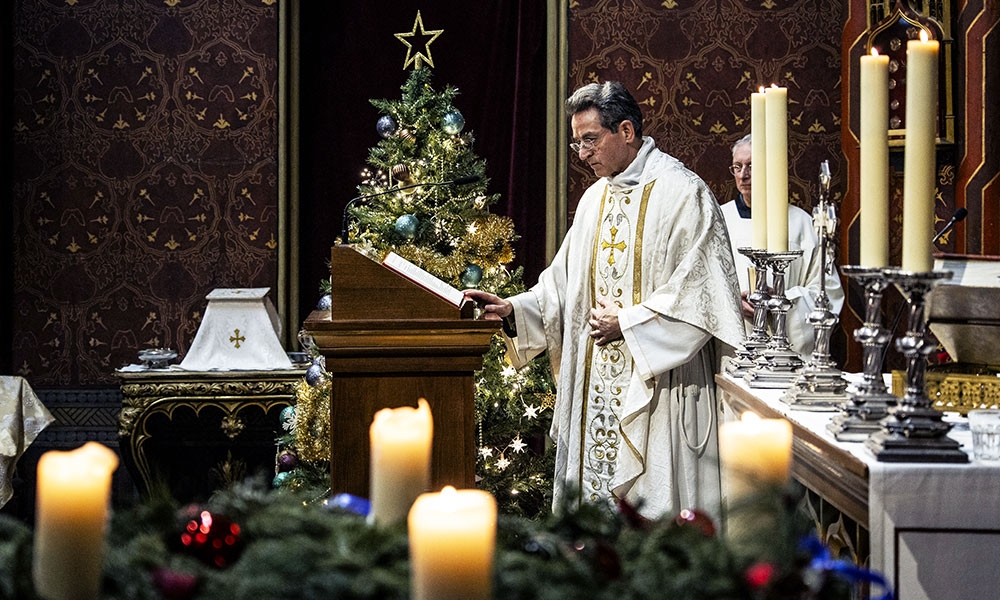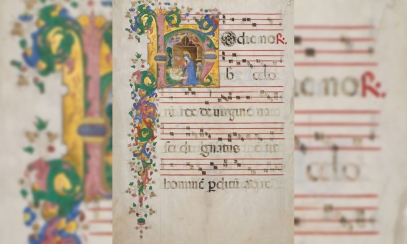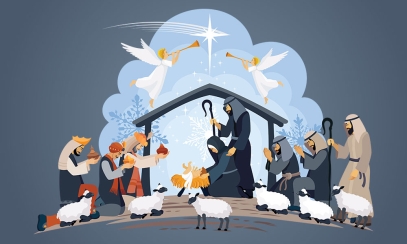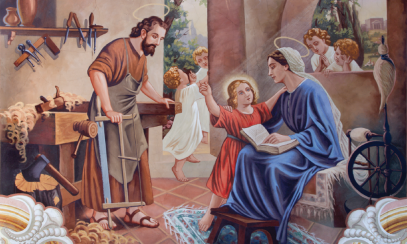
The Christmas Proclamation
The Nativity of our Lord Jesus Christ, better known as the Christmas Proclamation, is a verifiable trip through time. Through it, the announcement calls us to recall major events in the history of salvation and humanity: the creation of heaven and earth, the exodus from Egypt, even the founding of Rome! This important prayer of the Church, while only proclaimed once a year, contains a richness that predates the birth of Christ himself.
The Nativity of our Lord Jesus Christ, better known as the Christmas Proclamation, is a verifiable trip through time. Through it, the announcement calls us to recall major events in the history of salvation and humanity: the creation of heaven and earth, the exodus from Egypt, even the founding of Rome! This important prayer of the Church, while only proclaimed once a year, contains a richness that predates the birth of Christ himself.
In ancient Rome, an event called Kalenda was observed at the beginning of each month. The Kalenda (the origin of the word “calendar”) would include proclamations about upcoming events and was a day when all debts were settled.
Although we do not know the official author of the Christmas Proclamation or exactly when it was first written, it appears that the writer draws from the Gospels of Matthew and Luke, perhaps adapting them to mimic the ancient Roman Kalenda. Through it, the congregation is invited to recall the most important event in all of history – the birth of Christ – an event that would bring celebration to the earth and the promise of redemption from the debt of sin.
By the medieval period, the Christmas Proclamation found a place in the life of the Church. Every morning, monks, nuns and priests would pray Prime, one of the “hours” that was part of the Liturgy of the Hours. As they prayed Prime, the religious would proclaim the upcoming feast days, reading from what is called a “martyrology.” Eventually, the Christmas Proclamation was incorporated into what became known as the Roman Martyrology and was traditionally announced on Christmas morning.
This centuries-old tradition fell into disuse after the Second Vatican Council, but in 1980, this rich tradition returned to the life of the Church. Hundreds of attendees of the Midnight Mass in the Vatican heard St. John Paul II proclaim the Nativity of our Lord Jesus Christ, thereby restoring this practice to the Christmas Mass in the Night (or “Midnight Mass”). Through this action, the Holy Father revitalized a centuries-old tradition that continues today. Many parishes include the chanting (or reading) of the Christmas Proclamation before the start of Midnight Mass.
The Christmas Proclamation is not merely a statement of historical events but rather a call to remember that the greatest event of all is the birth of our Savior. This Christmas, perhaps before opening gifts, gather your family and share in this same proclamation, knowing you are uniting your joy with hundreds of holy men and women who have gone before us.
In the Twenty-fifth Day of December,
when ages beyond number had run their course
from the creation of the world,
when God in the beginning created heaven
and earth,
and formed man in his own likeness;
when century upon century had passed
since the Almighty set his bow in the clouds
after the Great Flood,
as a sign of covenant and peace;
in the twenty-first century since Abraham,
our father in faith,
came out of the Ur of the Chaldees;
in the thirteenth century since the People of
Israel were led by Moses
in the Exodus from Egypt;
around the thousandth year since David
was anointed King;
in the sixty-fifth week of the prophecy of Daniel;
in the one hundred and ninety-fourth Olympiad;
in the year seven hundred and fifty-two
since the foundation of the City of Rome;
in the forty-second year of the reign of
Caesar Octavian Augustus,
the whole world being at peace,
JESUS CHRIST, the eternal God and Son of
the eternal Father,
desiring to consecrate the world by his
most loving presence,
was conceived by the Holy Spirit,
and when nine months had passed since
his conception,
was born of the Virgin Mary in Bethlehem of Judah,
and was made man.
The Nativity of Our Lord Jesus Christ according
to the flesh.
Allison Barrick serves as a catechist at Christ the King parish in Ann Arbor, Mich. She has written articles for Our Sunday Visitor, Franciscan Magazine and the National Catholic Register.



